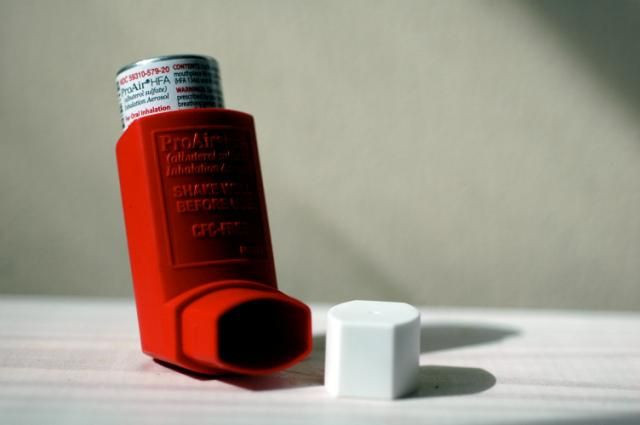A Mother's Colds During Pregnancy May Mean Higher Risk Of Asthma For Child: Study

Careful in the cold, expectant mothers: Those coughs and sniffles during pregnancy might translate into a future asthma diagnosis for your child, a new study suggests.
It’s estimated that about one in 12 people have asthma, a condition where a person’s airway narrows, swells and makes extra mucus – resulting in impaired breathing that’s sometimes life-threatening. According to the American Academy of Allergy, Asthma and Immunology, asthma-related costs grew from about $53 billion in 2002 to about $56 billion in 2007. The condition disproportionately affects African-American and American Indian people.
Doctors think the root causes of asthma, like many other diseases, are a combination of genetic and environmental factors. Sometimes several factors can combine to raise a person’s risk for asthma; last year, a study found that if a child carries a specific variation of the gene ORMDL3 and suffers an infection of rhinovirus (which causes the common cold), his or her risk for asthma rises 26-fold.
And now, a new study published in the Annals of Allergy, Asthma and Immunology suggests that rhinoviruses can influence asthma even before a child leaves the womb.
Researchers led by a team from University Children’s Hospital in Munich followed 526 German children from birth to their fifth year of age. The scientists interviewed parents during the pregnancy, then assessed the child’s health every year after birth over the five-year period, also taking measurements of potential allergens in each child’s home.
They found that maternal illnesses during a pregnancy, such as repeated common colds, meant that a child’s risk for an asthma diagnosis by age 5 was about 2.3 times higher.
"We know that allergy and asthma can develop in the womb since genetics play a factor in both diseases," allergist Michael Foggs, president of the American College of Allergy, Asthma and Immunology, said in a statement. "But this study sheds light about how a mother's environment during pregnancy can begin affecting the child before birth."
Researchers already know that a parent’s health may influence a child. Other studies have shown that having two parents with allergies means a child has a 75 percent chance of developing allergies; even if only one parent has allergies, a child's risk is still at 30 percent to 40 percent.
In the new study, the German researchers found that being exposed to common allergens early in life had consequences later on – but not all allergens are created equal. For example, cat ownership by itself did not seem to affect a child’s risk for asthma or impaired breathing.
“Children who had early exposure to allergens, such as house dust and pet dander, had increased odds of becoming sensitized [to the allergens] by age 5," Mitch Grayson, deputy editor of Annals of Allergy, Asthma and Immunology, said in a statement. But "when dust mites from the mother and child's mattresses were examined, children with high dust mite exposure yet low bacteria exposure were more likely to be allergic to dust mites than those with low mite exposure and high bacteria contact."
SOURCE: Illi et al. “Perinatal influences on the development of asthma and atopy in childhood.” Annals of Allergy, Asthma and Immunology 112: 132-139, February 2014.
© Copyright IBTimes 2024. All rights reserved.





















